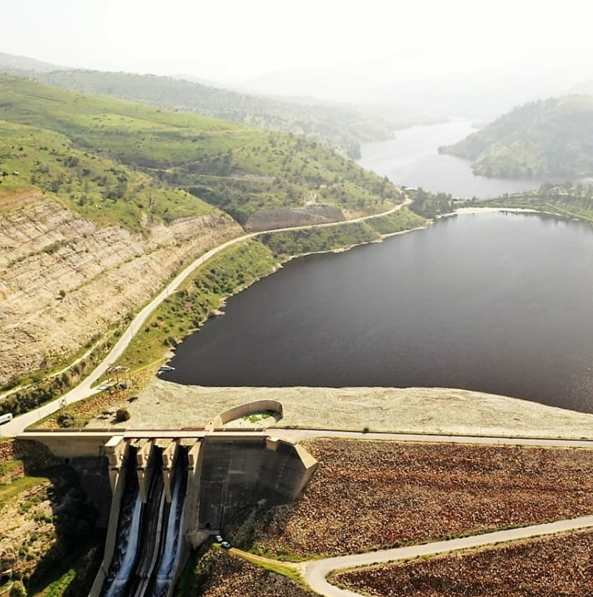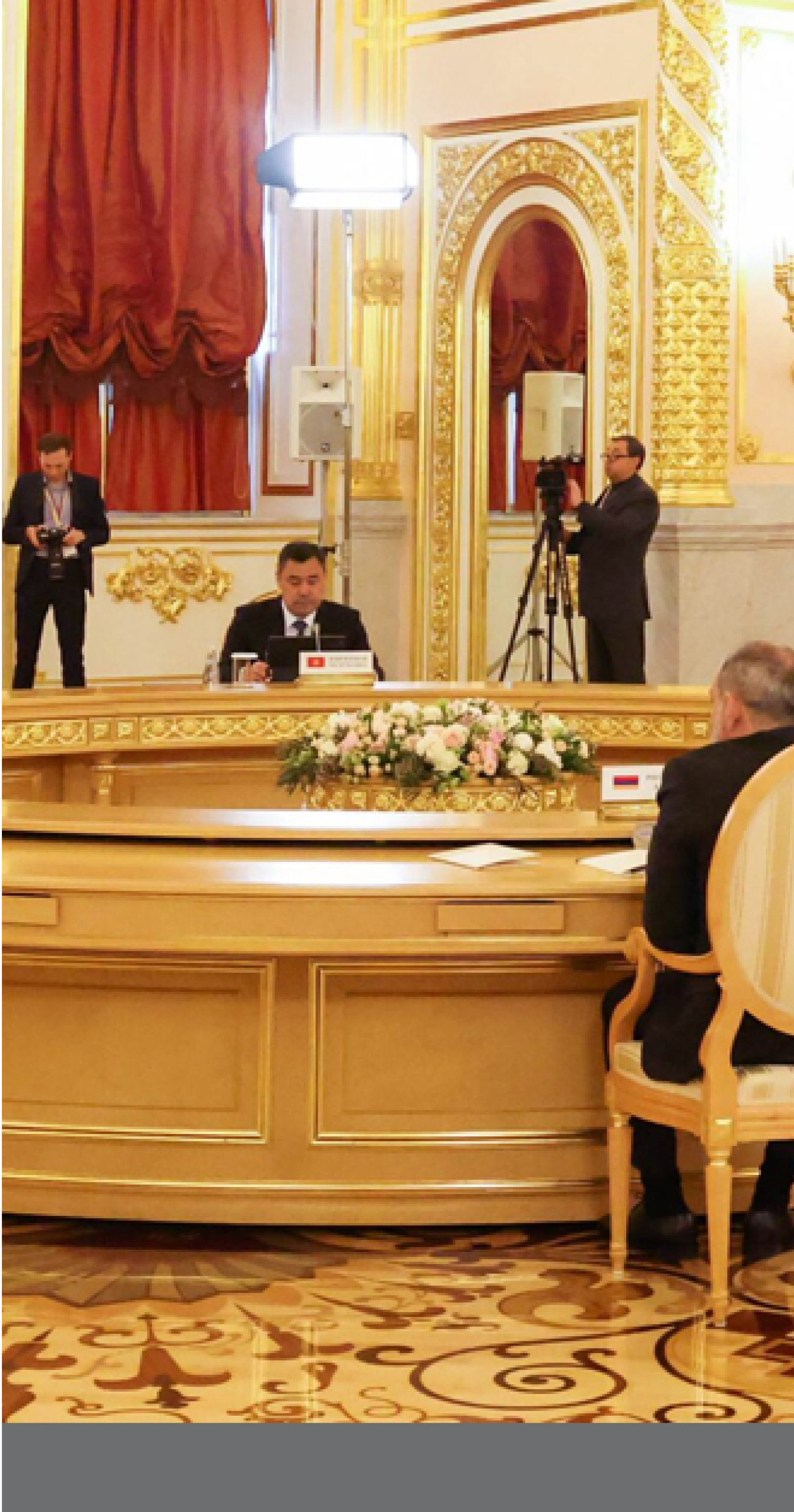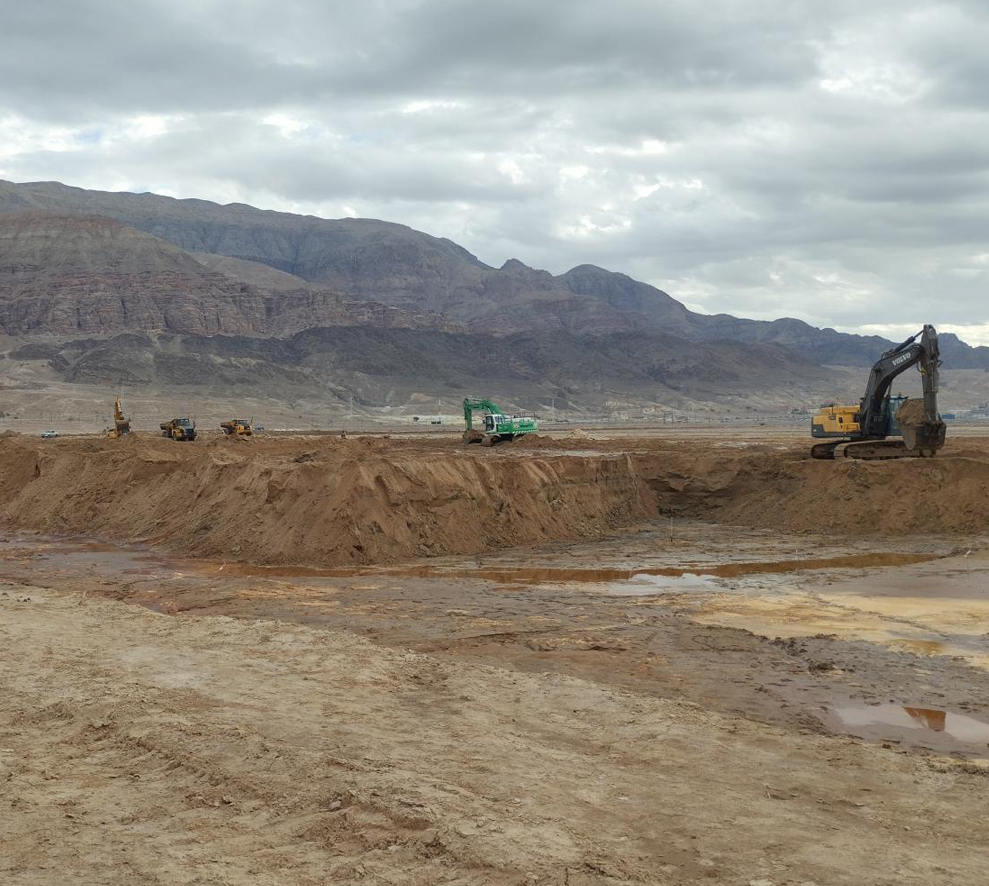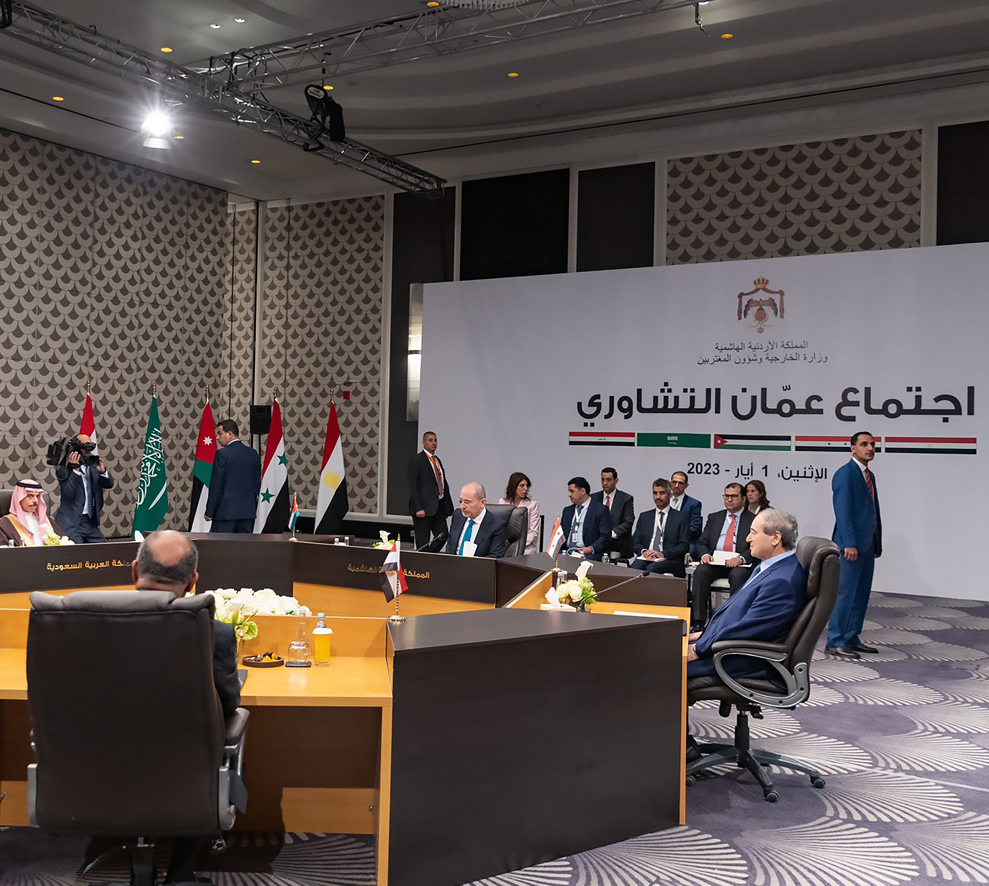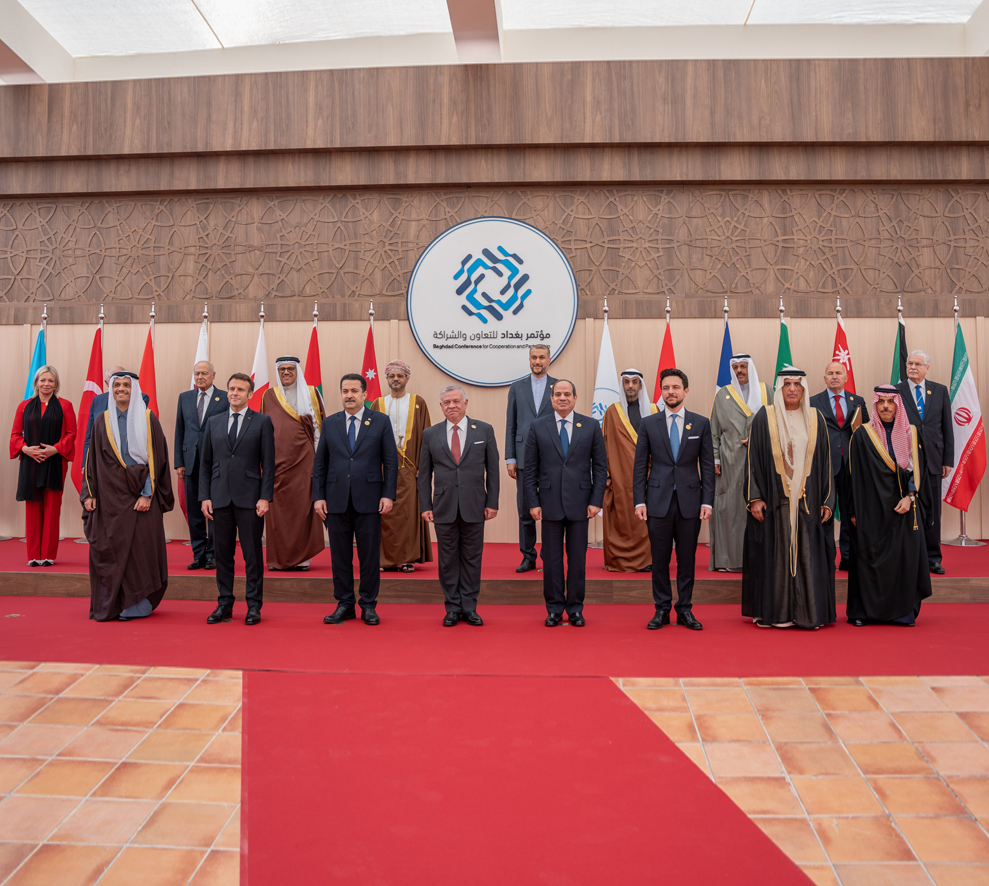This paper presents the dilemma of water security in the Hashemite Kingdom of Jordan and its future horizons. This subject is deemed to be one of the most important strategic issues facing Jordan. Its importance grows as time passes, concerning the scarcity of water resources, where Jordan is one of the most water-poor countries in the world.
In this context, and in view of the wide fields of the water crisis and Jordanian water security issues, within the historical, current, and future dimensions. This paper demonstrates the most significant axes of the Jordanian water security issue, based, as possible, on facts, what is tangible, and the scientific assessments for the future.
The paper also concludes that the water crisis in Jordan is deep, and that its sources are represented in the population growth increase, natural increase, hosting refugees, the scarcity of rain, the depletion of water resources, the climate change, and the increasing need of different sectors for water. In addition to that the water resources are limited in general.
This paper also attempts to figure out what specialists and experts estimate, regarding the possible scientific solutions in the future. and the alternative plans, through which these challenges will be overcome, in order to ensure that Jordan's water needs are secured for many decades to come.
In the practical and executive dimensions, this paper demonstrates what is been worked on to be achieved, whether in the short, medium, or long terms, via the various relevant bodies. Especially that the royal directives in this regard were very clear.
Current Status of Water in Jordan
It can be said that the Hashemite Kingdom of Jordan witnessed significant increases in the number of its population, represented either by a natural increase, or by waves of migration, displacement, and asylum. The matter which multiplied the need for drinking water and increased demand for it many times, in light of the great development witnessed by the various developmental sectors in the country.
In this context, according to government data Issued by the Ministry of Water and Irrigation, Jordan's need for water is about 3 million cubic meters per day, including all types of use, in addition to that houses, agricultural, industrial, tourism, and other uses needs are 90 cubic meters of water per capita. On the other hand, the governmental data also indicated that the international water poverty line touched about 500 cubic meters per capita annually, which is several times the current level in the Kingdom. Therefore, Jordan has become the second or third water poorest country in the world.
Expectations, including those of the Ministry of Water and Irrigation and the World Bank, say that the deficit in the drinking water sector alone will reach about 45 million cubic meters in 2022. While the total deficit for all needs will be more than 450 million cubic meters annually. As for the long run, a recent report by the specialized international website (New Security Beat) expected that more than 90% of the low-income population in Jordan will suffer a severe water insecurity by the end of this century. While other international studies, according to the Jordanian Ministry of Water and Irrigation, warned of a decline in the share per capita in Jordan, down to 60 meters cubed annually by the year 2040 if the current water conditions may continue this way, given the available water resources and the expected increases in the natural demand for such resources. In a related context, regarding the Jordanian water situation; there are a number of circumstances and tangible indicators related to this file at its current and future levels, the most prominent of which are:
- That River Jordan and the Yarmouk Basin, over the past and long decades, are deemed among the most important sources of water in Jordan, along with some major underground sources, such as the Disi basin. However, River Jordan is losing 85% of its water intake due to evaporation caused by the high temperatures, and by its exposure to processes of diversions in its sources and waters current, this is because of the Israeli water acquisition policies.
- As for the underground water, it is consumed, and the coming generations will be deprived of it, which will be in dire need thereto. According to the Ministry of Water and Irrigation, international studies specialized in new water studies have confirmed the notable perilous reality that threatens the underground water in Jordan. The same is a reality, that must be viewed with more caution by the competent government agencies in Jordan, whether at the present or the future, especially that these warnings came in line with the results of a study, made by the German Federal Institute for Geosciences (BGR), specialized in its research to study the underground water in Jordan from the fifties of the last century, for that is a reality for which future solutions should be found. Although the underground water in Jordan suffers a state of continuous depletion, it remains one of the main water sources in the Kingdom, whether for potable water, or for various other uses, where it constitutes about 56% of the rest of the total other uses.
- On another related context. In order to compensate for the water shortage that Jordan is witnessing in the agricultural sector, and in order to find alternative sources to meet irrigating the cultivated lands, It is noteworthy that Jordan previously initiated constructing the Karama Dam in the Jordan Valley, which its main source of water is Yarmouk River, in order to store 55 million cubic meters of water to be used in the agricultural field. Similarly, Jordan was keen to draw quantities of water from the Disi basin, still for the purposes of meeting the shortage in the field of potable water as well.
- Dam reserves in Al-Wahda, al-Wala, and al-Mujib dams are among the most important indicators of the water reserves, to secure Jordanian summer needs of water or not. According to how the Minister of Water and Irrigation, Mohammad al-Najjar, the cost of dragging 100 million cubic meters of Disi basin is around 970 million USD. While such waters need to be mixed in order to be processed, for they contain radioactive materials. While the water should meet the Jordanian specifications required for household potable purposes.
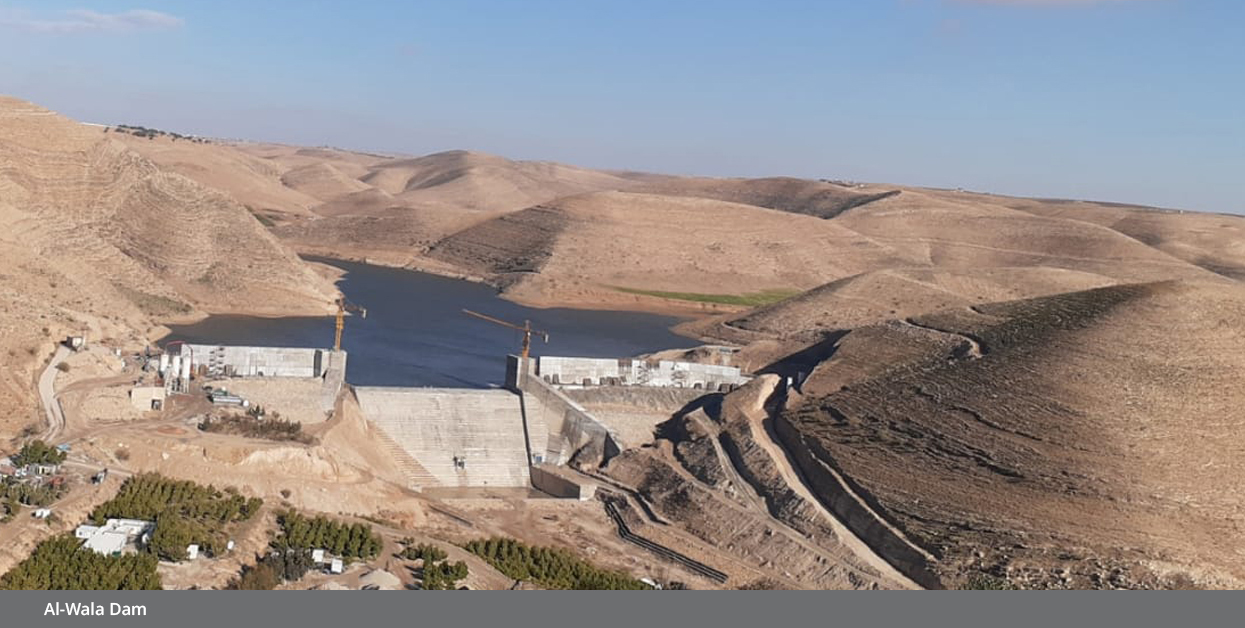
- As for the rainfalls, especially in recent decades; the rainfalls has decreased by 20%. Because the Jordanian dams and its underground water recharge depend entirely on rainwater, then one of the most prominent features of water poverty in Jordan becomes clear. Such poverty, in 2021, reached the extent of the drying out of a number of dams, and the water reserves in a number of other dams reached less than 5% of their storage capacity. According to the Jordanian Ministry of Water and Irrigation, the dams’ water storage was reduced in 2021 by about 80 million cubic meters, compared to the previous year regarding the dams used for potable purposes. 2021 autumn season witnessed a water crisis in the country, when it was announced that 6 major water dams, out of 17 large, small, and medium dams, would dry out. Perhaps we should pause here to consider the issue of expanding dams construction, as the Jordanian Minister of Water and Irrigation, Mohammad al-Najjar, said that expanding dams construction is a futile solution, especially since the number of built dams is not a sufficient solution, as the number of already constructed dams is sufficient depending on the rainfall rates.
- According to numbers, which have deep implications, besides what the Minister of Water and Irrigation also clarified, Jordan possesses only 10% of the quantities needed to achieve self-sufficiency for food production, with amounts that reach only 1.1 billion cubic meters of water. In fact, Jordan needs 11 billion cubic meters of water annually to achieve self-sufficiency in food production. Hence, the dimension of food security becomes clear in its relation to water security, which represents an essential part of it. The additional resources to meet the water deficit in Jordan are an important aid in facing the urgent need for water, especially in light of the scarcity of rainwater.
Causes of Water Crisis in Jordan
Based on the foregoing, the causes of the water crisis in Jordan are due to many factors, which can be summarized as follows:
- According to many experts and specialists in the field of water in Jordan, one of the reasons of such crisis, is the notable increase in dependence on underground water, the decline in rainfall, due to which the amount of surface water has decreased. In addition to the misuse of various water sources, and the repeated attacks on such resources' lines, which have become a haunting problem for the Jordanian public, where because of it, large amounts of water are drained.
- Also, Israel’s control over water sources that are vital to Jordan, like the waterways of the Jordan and Yarmouk rivers, is one of the causes of this crisis, as Jordan receives a small amount relatively, which are way less than what it has historically been entitled to.
- Water resources small limits and the climate change, that is now affecting the amounts of rains.
- Population pressure on water resources.
- Over-pumping from the underground wells.
- The increasing the demand for water resources, to meet the country's increasing needs in various sectors such as agriculture, industry and others.
Future Horizons and Solutions
An international report, specialized in Jordanian water affairs, according to the Jordanian Ministry of Water and Irrigation, issued by the "New Security Beat" of "Wilson Center" Institute in Washington, entitled (Avoiding Crises in the Future of Water in Jordan) regarding the assessment of future water security for Jordan, demonstrated that both The "Jordan Water, Food and Energy" project, and the "Water for Sustainable Urban Environments" project, represent a major effort, and that they are one of the important studies for Jordan and its international partners to study, and assess the water crisis in Jordan, for the coming years.
According to this Report, Jordan by 2100, will face underground water levels drop by about 60% in the densely-populated northern governorates, and average surface water flow will also decrease by 25% by the end of the century, compared to 2016-2020. This is while somewhat optimistic scenarios exist. The report also revealed, within the scope of domestic water security in Jordan, some risks that make a wide and tangible regression, making this be it another challenge to Jordan's water security, even in relatively favorable future conditions.
In fact, addressing the financial challenge and expenditures required to implement water projects, is in itself a major problem, given Jordan's difficult economic conditions and limited resources. This problem is illustrated here, by the fact that water projects require very high costs.
Future Solutions and Projects Awaiting Implementation
There is consensus among specialists and those are concerned with water issues, on the importance of finding solutions to the water security issues of Jordan, and on developing visions and plans that contribute to building a strategy, to confront the acute shortage of water resources. Nevertheless, adopting a solution or another, besides solutions' priorities, are still issues which research is still going on, with many intellectual views and specialists' opinions addressing them. However, there is almost general agreement on some axes, the most important of which are:
- Facing the challenge of water scarcity by developing non-traditional resources, such as reusing processed wastewater in agriculture and industry.
- Reconsidering the reality of Jordan's water share from Syria. It is a share that should be doubled due to the presence of a large number of Syrian refugees on Jordan's land, and in respect of previous agreements in this regard, as Jordan has been demanding its water rights since 1987.
- Using modern technologies in agriculture, and focusing on such technologies, is deemed one of the practical solutions to face the water problem in the Jordanian agricultural sector, especially as this sector consumes 50 percent of Jordan's water resources. Therefore, it is necessary to turn to techniques in which crops do not need much water.
- The correct management of water resources is also one of the effective solutions to address this crisis in Jordan, as the real consumption of the Jordanian citizen does not reach 50 liters, nonetheless, the other quantities of water are calculated on consumption, but they go with the waste, according to the Jordanian Ministry of Water and Irrigation and many experts.
- Developing solutions to the problem of administrative and technical losses.
- To significantly reduce water theft and material losses.
- Raising the piped water tariff for non-essential uses.
- Using modern methods, such as cloud seeding, and modern techniques in irrigation and agricultural production.
- Expanding water-gathering operations during rainy seasons, in dams and water basins, i.e. "water harvesting", and strengthening the same by digging water-harvesting ponds, which is one of the most successful water storage operations over time. There are thousands of archaeological water-harvesting sites in the Jordanian desert.
- Relying on a radical solution based on water desalination.
- Reallocate water from the agricultural sector to the urban sector, and equalize the distribution of piped water supplies among urban users.
Perhaps it is important to point out to the need to implement a set of coordinated supply-and-demand measures and procedures, to mitigate the deterioration of water security. This type of measures is often accompanied with political and security difficulties.
In fact, some estimates by the director of the United States Commission for Development in Jordan, Sherry Carlin, suggest that the possible solutions in the future, to fill the gap in Jordan's growing water demand, will require up to more than $8 billion USD. In addition, the Jordanian government spends an amount of three dinars to extract water from its various resources, process, pump, and deliver it to every house in Jordan, against every Jordanian dinar paid for the water bill. This matter threatens new infrastructure investments over the next five to ten years in this sector, which already has a severe financial deficit, estimated at about 500 million USD per year.
Solutions in Progress
The importance of the water issue, its challenges, and problems in Jordan compelled state institutions to work towards finding solutions, and current and long-term studied plans. While work is being done in some axes, a number of practical operational measures can be seen, as well as some solutions being worked on, and projects intended to be implemented, in a manner that has a strategic long-term dimension, that we can mention as follows:
- On the level of the state budget, and the need to provide financial requirements and costs to implement water projects, the sources of the Ministry of Water and Irrigation indicated that the general budget draft law for the fiscal year 2022, allocated a about 2 million dinars budget to the Ministry of Water and Irrigation / Jordan Valley Authority, for constructing the transporting line from Lake Tiberias to the King Abdullah Canal.
- With regard to water losses in Jordan, this loss reached 48%. Half of this loss is from networks. There are grants directed to renew and change these networks. However, there is still an urgent need for radical and firm solutions to the problems of water theft. It is noteworthy that the Ministry of Water and Irrigation spends about 400 million USD on the water loss reduction project -the important project strategically speaking- during the years 2020-2022, in order to address waste reduction, which will positively affect the quantities of water supplied.
- In another context, the issue of Jordan's share of the Yarmouk River waters became salient again. In the context of activating the Yarmouk River water investment agreement between Jordan and Syria, signed in 1987, Jordan called on Syria to reactivate this Agreement, and to stop the Syrian side’s excess of increasing the number of dams and ponds. During the recent governmental meetings held in Amman, the two sides agreed, during the ministerial meetings, to reactivate the joint water committee between the two parties, to follow up the implementation of the agreement signed between the two countries in 1987.

- On a direct practical level, the Jordanian Ministry of Water and Irrigation has, months ago, carried out projects to extract underground water from the deep layers, by digging wells in the basaltic areas, in Hisban, Qatraneh, al-Hasa and al-Shidiya. The Ministry also drilled about 21 far-deep wells exceeding the depth of 1000-1200 meters. In this context, the deep underground wells do not provide a strategic, sustainable, and reliable alternative in terms of quantity, type, and continuity, as announced by the Ministry of Water, due to the small quantities extracted, the increase in salinity, heat and high radiation sources, in addition to the need for very high financial costs to treat them. The matter which adds other financial burdens and costs on the treasury.
- Because water issues are directly related to energy issues, experts and specialists in water and energy fields, stress on the need to develop solutions to obtain energy at an appropriate cost, and to invest the Kingdom’s ability to generate energy from non-conventional resources, using solar and wind energies, especially since Jordan lacks both water and energy resources. the matter that increases the burden of providing water resources for all uses. Perhaps it is important. In this context, to mention what the Secretary-General of the Water Authority, Bashar al-Bataineh, explained during his participation in one of the workshops organized by the German agency GIZ, with the participation of international experts, addressing the close interrelationship between water and energy, where he said that "water sector strategy is based on reducing the scale of spending and consumption. The consumption of energy by the Water Authority and water companies in 2019 amounted to (1655 GWh) in the same year". In the issue of the electric energy consumption in the water sector, the total volume of energy consumption in the Kingdom is about 15%, while energy costs account for about 43% of the operational costs of the water sector.
(National Transmitter) Project
The “Bahrain Transmitter” project, from the Red Sea to the Dead Sea, is one of the projects that has not seen the light. It is a project related to the peace process with Israel, in which an international agreement was signed between the parties to start the first phase in 2015. Experts in Jordan and specialists in water field of such project described it as a strategic water option for Jordan, despite the high financial and high-tech requirements such project needs. Jordan announced its official abandonment of implementing this project, due to the Israeli obstinacy in starting the implementation for more than a decade; there are many alternatives in its water resources, unlike the Jordanian case.

An alternative to this was the current project, which is the “National Transmitter” project (the Aqaba-Amman Water Desalination and Transmission Project). The "National Transmitter" project consists of a desalinated seawater transmission system, the construction of a huge seawater desalination facility in Aqaba, and a fresh water transmission system to the rest of the regions. The cost of this project is 2.5 billion USD, of which half a billion USD has been obtained so far. As the Secretary General of the Water Authority saw, the efforts of the Water Sector Department are focused on accelerating the implementation of this project (the National Transmitter) and transferring water to all governorates of the Kingdom, with a capacity of 300 million cubic meters of desalinated water annually, to switch to a Continuous Supply System after the project is operated, which is expected to take place within the year 2027. According to the spokesperson for the Ministry of Water and Irrigation, the National Transmitter Project will provide 300 million cubic meters of desalinated water from the Red Sea, which will cover Jordan's potable water needs until the year 2040.
"Water for Energy" Declaration of Intent
The "declaration of intent" to exchange “energy with water” between Jordan and Israel comes as a declaration of intent, to cooperate in the production of electricity from solar energy and water desalination, provided that feasibility studies for this project will begin in 2022. The agreement that will come later, will stipulate that Jordan will work to generate electricity from solar energy for Israel, which will desalinate water for Jordan. Some observers saw in this declaration of intent a political aspect before economic aspects.
By the virtue of this project, the government’s approval was announced, at the time, to enter into negotiations with the interested parties, stipulated that this matter will be correlated to provide Jordan with 200 million cubic meters of desalinated water, in order to reduce water pumping from drained basins, so that the water will be re-extracted from them after 2040. One of the advantages of this project is that it provides additional quantities of water for irrigation purposes. With the rejection of this agreement by most of the MPs, most demands headed towards prioritizing searching for other alternatives, such as the desalination of Aqaba water, and the national transmitter project. Other respects were heading towards Arab options, like Syria, through the Unity Dam, for example, and finding a formula for understanding with the Syrian side to stop the attacks on water. On the other hand, a number of deputies called for thinking about the interest of the Jordanian state, and the people's need for water.
In this context, and in the midst of the search for alternative solutions to the water crisis in Jordan, the statements of the former Minister of Water, Munther Haddadin, in which he spoke about the existence of water in the Kingdom sufficient for Jordan for 500 years, sparked a debate in the Jordanian street about what proves the validity of these statements. Haddadin said that he had sufficient studies to prove that Jordan possesses a strategic stockpile of saturated sandstone in the ground, stressing that there are solutions to benefit from the brackish water, which does not see a governmental consideration. Perhaps, in my opinion, it is important to the experts and specialists, in the governmental sector, to emphasize on the interdependence of the issue of water and energy, with the consequences of water projects in general and its desalination, as a need to provide energy resources, and high costs to meet them.
This focus on very deep and broad axes, and in a highly sensitive national security issue, does not cancel out the fact that every work title on the topics that was addressed, entails a lot of data, information, and implementation plans, based on a national vision and a comprehensive strategy. Those are issues that have become a burden on Jordanian state institutions to shoulder its responsibilities of accomplishing the work thereof in their various axes, for water security is the security of life, and there is no issue of national security may be more important than it.
Keep in touch
In-depth analyses delivered weekly.

Related Analyses:







